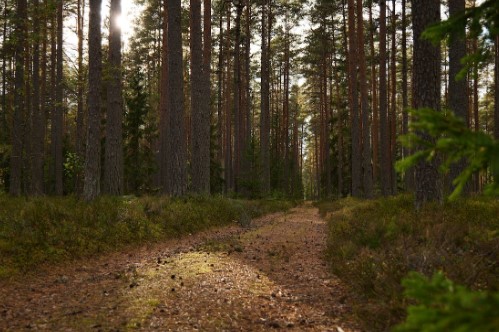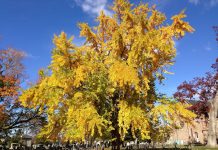The albino redwood tree (Sequoia sempervirens) is a rare and unique form of the coast redwood tree. Due to their lack of chlorophyll, albino redwoods have white or yellowish needles and bark. A green pigment is known as chlorophyll aids plants in the process of photosynthesis. Albino redwoods cannot survive without chlorophyll.
The albino redwood is an intriguing and fascinating species of tree that has captured the attention of scientists and nature enthusiasts alike. Scientists have been puzzled for decades by these trees, which are a rare natural occurrence. The occurrence of albinism is rare in both animals and humans, but it is even rarer in plants, where it manifests as a lack of chlorophyll. At the seedling stage, albino plants die due to this lack of green pigment, which is essential to photosynthesis and the production of sustenance.

However, there is an exception to this rule. Several albino trees in California have been observed to survive into adulthood by sucking nutrients from their parents. Unlike their healthy counterparts, albino redwoods do not grow into majestic giants but instead, grow into shrub-like vegetation at the base of the parent tree. Through their intertwined roots, albino trees can obtain sugars from healthy trees. The albino plants bear a lot of brown foliage during winter and have distinctive white needles at certain times of the year.
White or yellowish needles and bark are the most distinguishing characteristics of albino redwoods. Unlike the dark green foliage of most redwood trees, they have white needles and bark that stand out starkly against the dark green foliage of ordinary redwood trees. As albino plants lack chlorophyll, they cannot photosynthesize like normal trees, so they rely on water and nutrients from their hosts.
Read More – The Rarest White Birds Albino House Sparrow
Plant physiology professor Jarmila Pittermann explains, “The albino plant acts like a parasite because it is dependent on the parent plant for everything.”
Although albino redwoods are parasitized by healthy redwoods, the relationship is not entirely parasitic. Research suggests that albino trees help healthy redwoods survive by filtering out soil toxins. Having faulty stomata causes albino redwoods to lose more water through transpiration, requiring more water to be absorbed through their roots.
Their bodies accumulate more metal as a result. According to Moore, who is a doctoral student at the University of California Davis, toxins such as nickel, copper, and cadmium are present at high levels in the soil. Redwoods with albino mutations tended to accumulate more of these metals than redwoods with healthy mutations.
As Moore said, “They are poisoning themselves. They are filtering toxins like a liver or kidney.”
The first albino redwood was discovered near San Rafael in 1866 and transported to the California Academy of Sciences in San Francisco, where researchers struggled to find a reason for its waxy leaves’ whiteness. Upon closer examination, it was discovered that these plants are white because of a genetic mutation that inhibits chlorophyll production.
About 300 to 400 albino redwoods are believed to exist in California’s wilderness, but their locations are not disclosed to prevent people from finding them and collecting harmful souvenirs. Because their white needles blend in with the surrounding foliage, they are usually found growing alongside normal redwood trees in forests.
There are only a handful of albino redwood trees in the world, and they are protected under the law. A redwood albino may not be removed or harmed in any way. The preservation and protection of these unique trees have gained increasing attention in recent years. There are ongoing efforts to locate and document all known albino redwoods, and studies are underway to better understand their biology and genetics.

Read More – The Redwood National Park
Inexperienced gardeners should avoid growing albino trees because they are challenging. To grow successfully, albinos must grow on a host tree. Albino plants are best left to their natural growth and enjoyed in their natural environment.
Due to its rarity and protected status, the albino plant has limited commercial value. Despite this, albino redwood has some uses in the woodworking industry. Decorative woodwork, such as carvings and furniture, is often made of albino trees because of their light and porous wood.
Color is the most significant difference between albino and normal redwoods. Albino redwoods have white or yellowish needles and bark, while normal redwoods are dark green. They rely on their host trees for survival, unlike normal redwoods that can photosynthesize and produce their food.
Read More – The Mysterious Coin Wishing Trees







